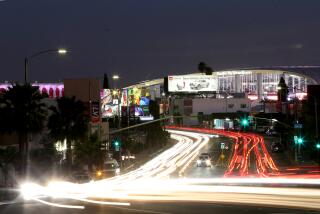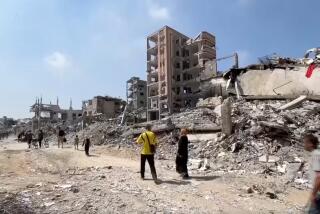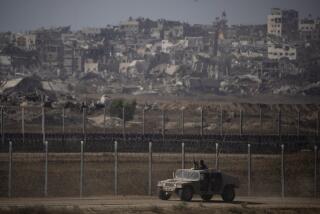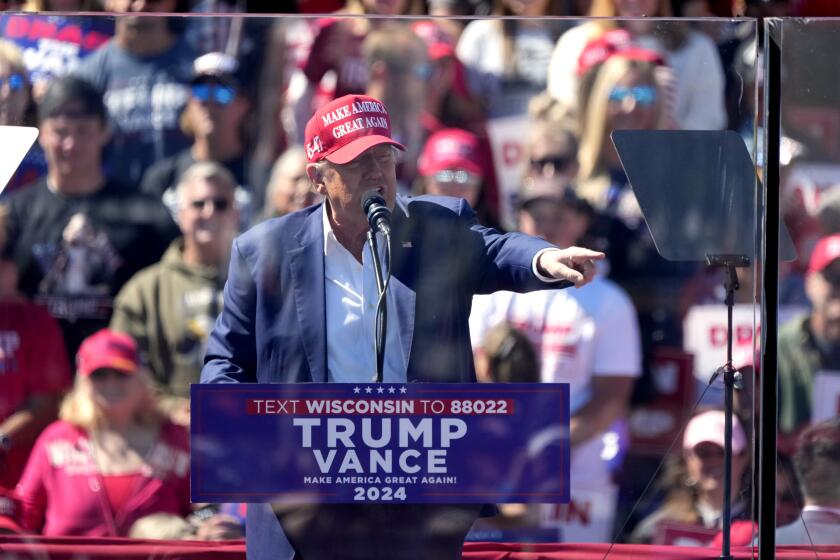Rebuilding Mosul: The daunting mission to bring the demolished city back from the dead
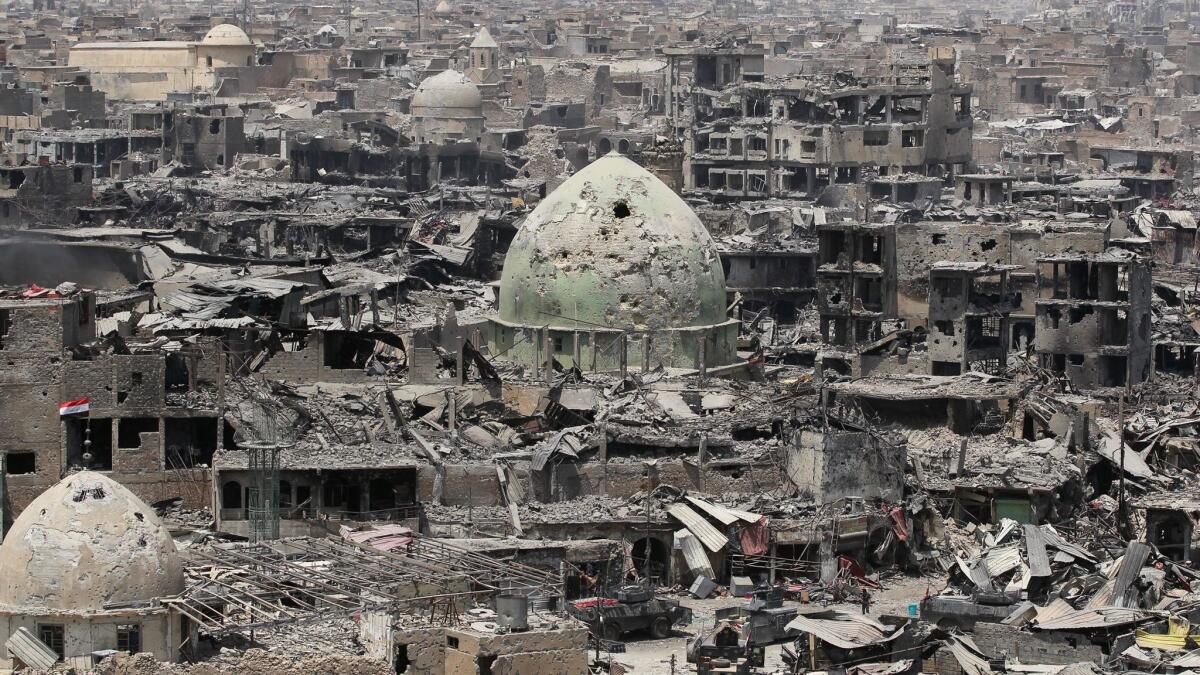
The nine-month U.S.-backed offensive to expel Islamic State militants from Mosul was a relentless and savage fight. Now that it has been won, another daunting battle has begun: to bring Iraq’s second-largest city back from the dead.
Thousands of buildings have been reduced to rubble, more than 120 miles of roadways have been damaged, and the city’s airport, railway station and at least one university are wrecked.
As the militants retreated after 2½ years of occupation, they intentionally targeted infrastructure, demolishing vital bridges, attacking the water and sewage systems and tearing down electricity lines. They also laced neighborhoods with booby traps and homemade bombs.
“The destruction is massive,” said Saroj Kumar Jha, who oversees Iraq, Syria, Jordan and Lebanon for the World Bank. “It will be a very big reconstruction effort.”
He said Iraqi authorities and Mosul residents would have the opportunity to replan the city and improve the quality of life there.
East Mosul, which was recaptured in January, is on the mend. But in the recently reclaimed west of the city, “the picture is very different,” said Lise Grande, the United Nations Development Program’s resident representative for Iraq.
Of western Mosul’s 54 residential districts, the U.N. characterizes 15 as “heavily damaged,” meaning the majority of the buildings are uninhabitable. Some 32,000 houses have been destroyed in those areas.
“If you were to go into those 15 districts, what you would see is very alarming,” Grande said over Skype from the Iraqi capital Baghdad. “They look like they’re flattened.”
Additionally, 23 districts are “moderately damaged,” meaning possibly up to half of the buildings have been destroyed or are structurally unsound, and 16 districts are “lightly damaged,” Grande said. Some 16,000 homes have been destroyed in these areas.
The U.N. estimates that repairing Mosul’s basic infrastructure will cost more than $1 billion.
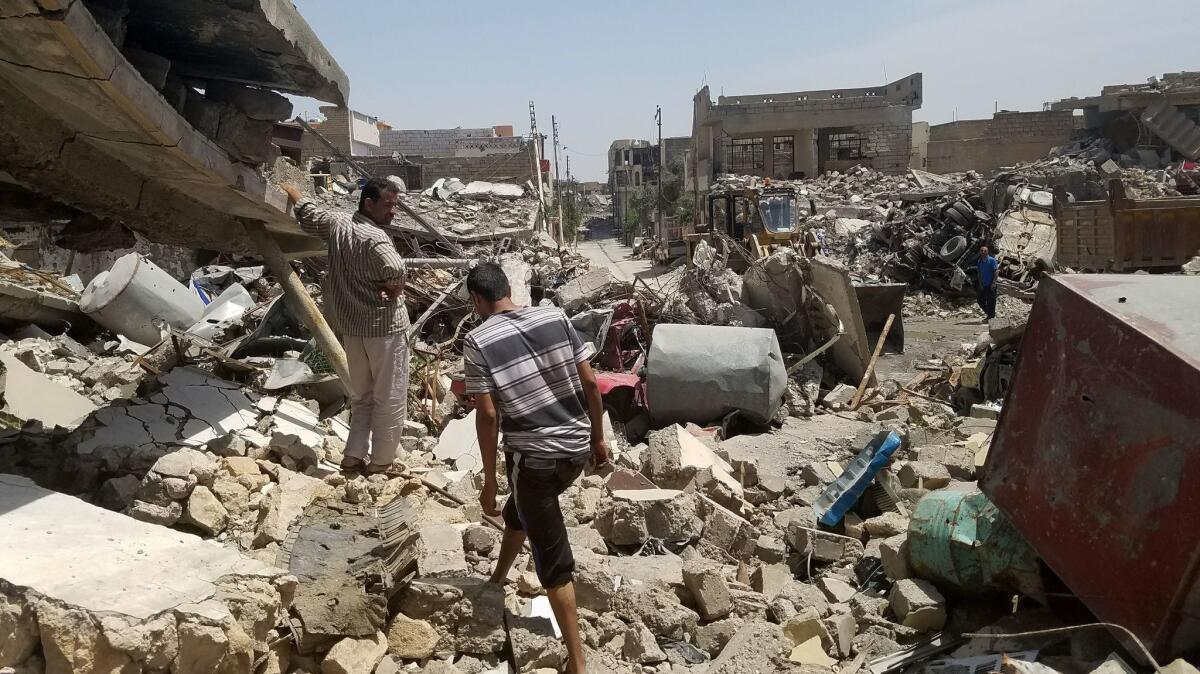
So where to begin?
The first step is stabilization, Grande said.
“We start at the bottom of the grid in reestablishing temporary services so that people can start to rebuild their lives.”
A so-called “command cell,” consisting of community members, tribal leaders and representatives of the security forces, set the priorities, Grande said. Then the U.N., humanitarian groups and other international partners help the government meet its goals.
Humanitarian groups have started trucking water into the city while “stabilization teams” work to repair pumping facilities and substations, Grande said.
Massive mobile electrical generators will also be moved in and mounted on concrete slabs and hooked up to individual homes in neighborhoods lacking power.
The World Bank has an ongoing project to help the Iraqi government design and reconstruct several bridges “on a fast-track basis,” said Jha, the World Bank official.
“Mosul depends on various supplies coming from different parts of Iraq,” he said. “Without access, nothing will happen.”
Experts said that restoring the city’s pharmaceutical factories and once-thriving industries such as furniture-making is paramount to reviving Mosul.
Bringing people home
So is restoring the population.
Some 940,000 people fled the city of 2 million after the fighting started last October, according to the U.N. About 240,000 have returned, while 320,000 have found refuge in emergency camps and the rest shelter with family and friends or in mosques and public buildings, Grande said.
Their return to their homes could take months as unexploded ordnance is identified and cleared and Iraqi forces shore up security.
The government’s national operations centers will tell the public when neighborhoods are safe for return, Grande said.

Under a U.N.-supported program, communities would be brought together to decide which houses get repaired, and contractors would hire local residents to rebuild the homes.
“The reason that process is so important is that there is a consensus among everybody about which houses get rebuilt and which don’t, and that’s critical,” Grande said. “That helps to mitigate social tension at the neighborhood level.”
Rebuilding trust
But rebuilding and reviving Mosul will require more than physical reconstruction, experts said.
“Obviously there’s a cosmetic issue, but underpinning that is governance,” said Eric Bordenkircher, a researcher at the Center for Middle East Development at UCLA’s International Institute. “You can build all these houses, but people may not want to return if they don’t trust the Iraqi government.”
Such confidence is lacking between the Shiite-led Iraqi government and predominantly Sunni communities such as Mosul. Experts say the Shia monopoly on power has caused Sunnis to feel alienated from the state and the political process.
“The government will need to be more inclusive,” Bordenkircher said. “Sewage, running water, electricity are a little more immediate, but the issue of trust, accountability, inclusiveness — those are time-intensive and are going to take not days, not weeks, not months, but years to merge.”
Jha of the World Bank, said creating a mechanism “for people to be at the center of the rebuilding process” was critical.
“Reconstruction is an opportunity for reconciliation,” he said.
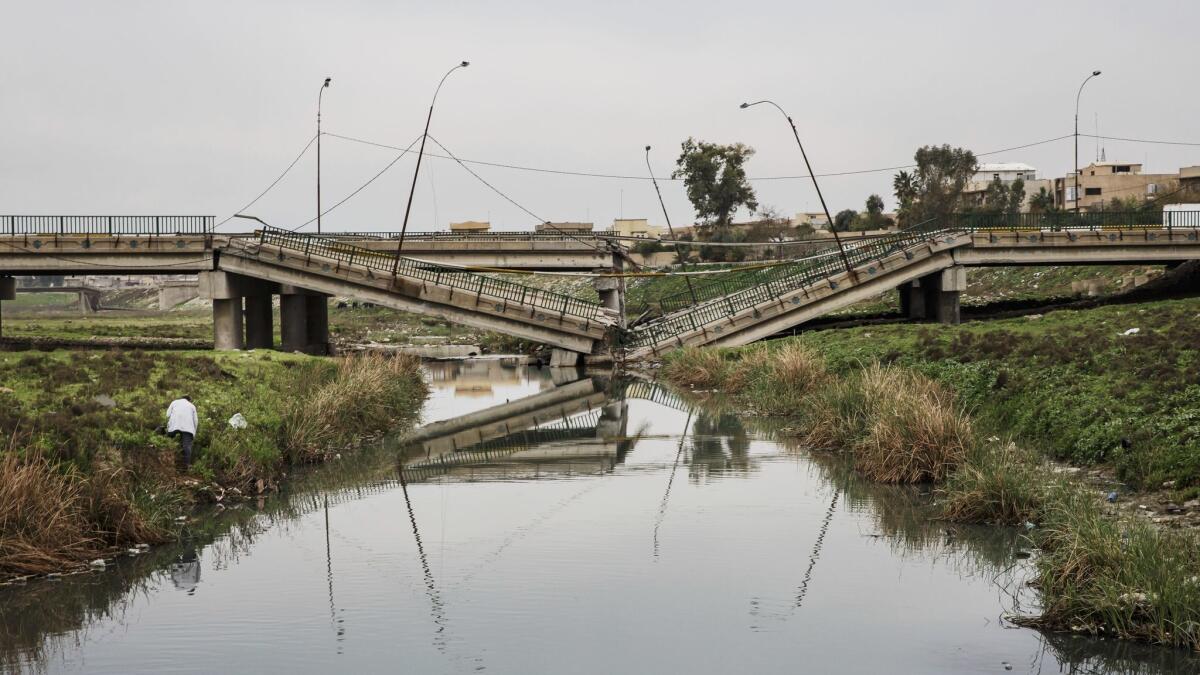
Lingering concerns
Hovering over the recovery effort are the threats of corruption and mismanagement.
“In the real world, you can state all kinds of good intentions, but the real question is going to be, very early on, have you appointed people who are willing to work together, who are competent and reasonably honest,” said Anthony H. Cordesman, a military analyst at the Center for Strategic and International Studies, a Washington think tank. “There’s a tendency to assume that reconstruction and recovery are enough. A lot depends fundamentally on what people actually do on the ground.”
And then there is Islamic State. Experts believe the militant group will continue to undermine security efforts. And Iraqi government forces will need to adopt counterinsurgency strategies.
“You’re going to need at least paramilitary and probably military efforts in the Mosul area for at least a year,” Cordesman said. “This isn’t going to be something where you can go back to a normal civilian rule of law and policing.”
Iraqi officials would also have to find a way to counter the lingering influence of Islamic State ideology, particularly among young men who may feel disenfranchised.
Bordenkircher said that Mosul faces the risk of Islamic State 2.0 “if people still continue to feel that they’re marginalized, that they’re excluded from the governing process, that they’re being discriminated against by the Iraqi government in Baghdad.”
“Cosmetically, it may recover,” Bordenkircher said. “But the heart and soul of the city may never really return.”
For more on global development news, see our Global Development Watch page, and follow me @AMSimmons1 on Twitter
ALSO
‘I watched her die’: The last push for Mosul, from those who lived through the ferocious battle
Dodging rubble is one thing — in Mosul, cyclists contend with mortars and gunfire too
Pache, a stew of sheep and cow innards, may not look appetizing, but the people of Mosul adore it
More to Read
Sign up for Essential California
The most important California stories and recommendations in your inbox every morning.
You may occasionally receive promotional content from the Los Angeles Times.
